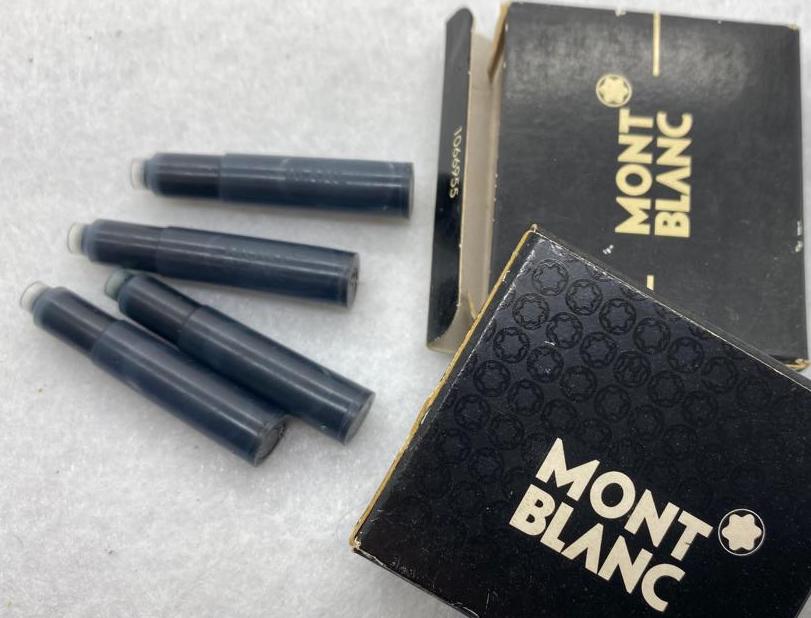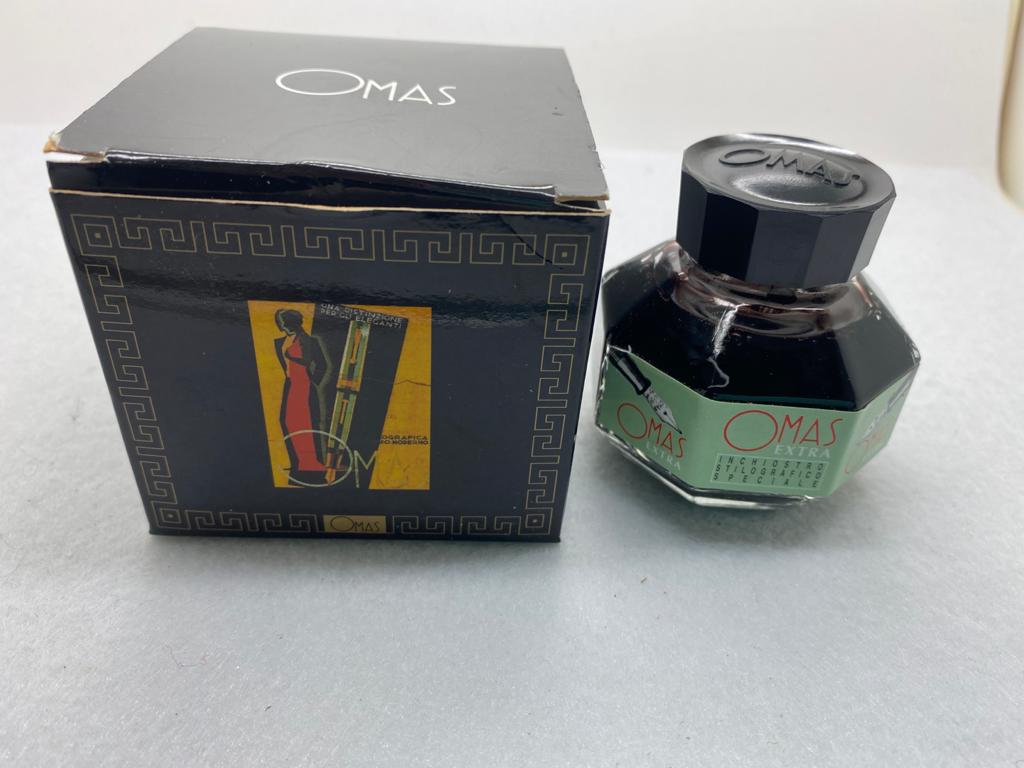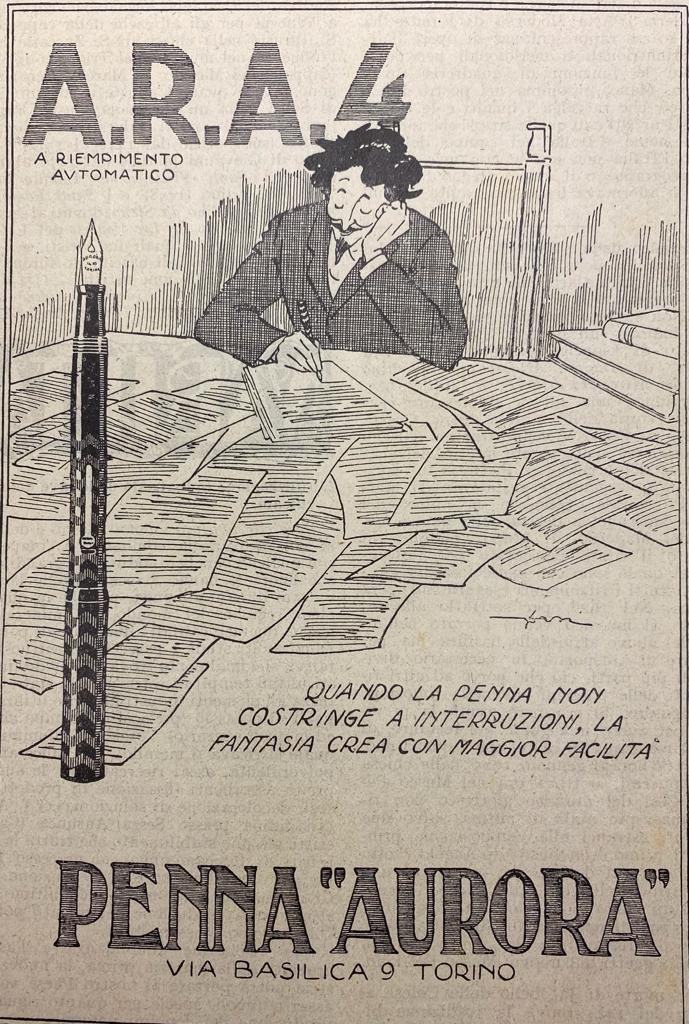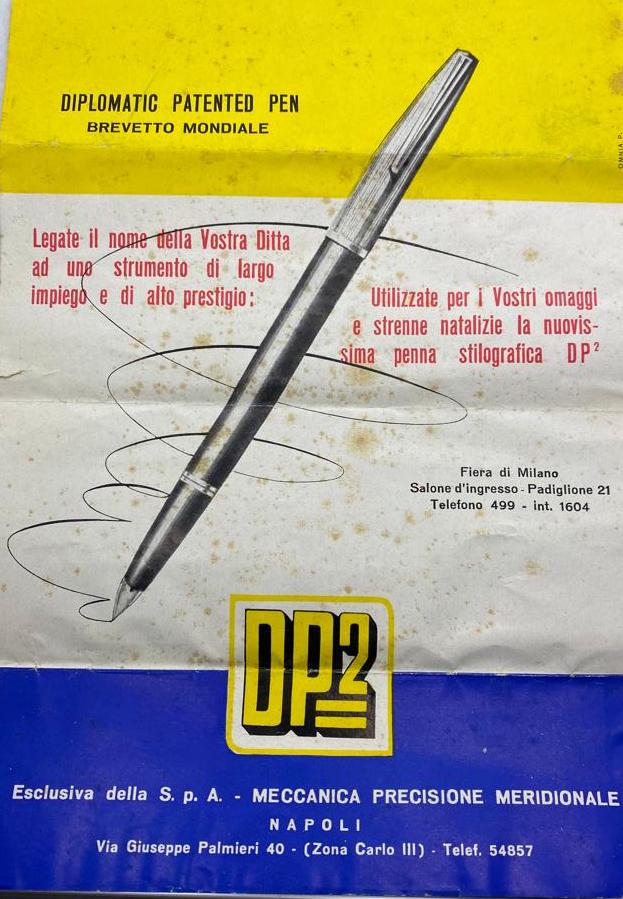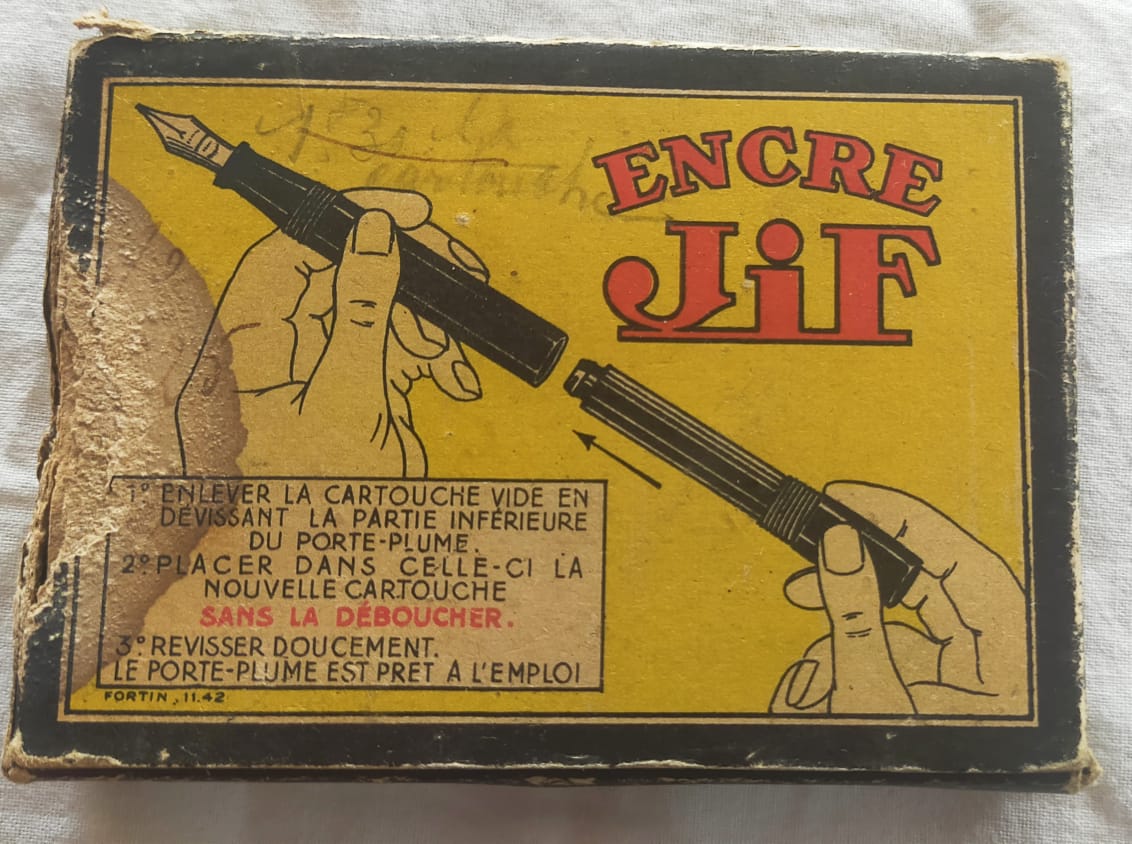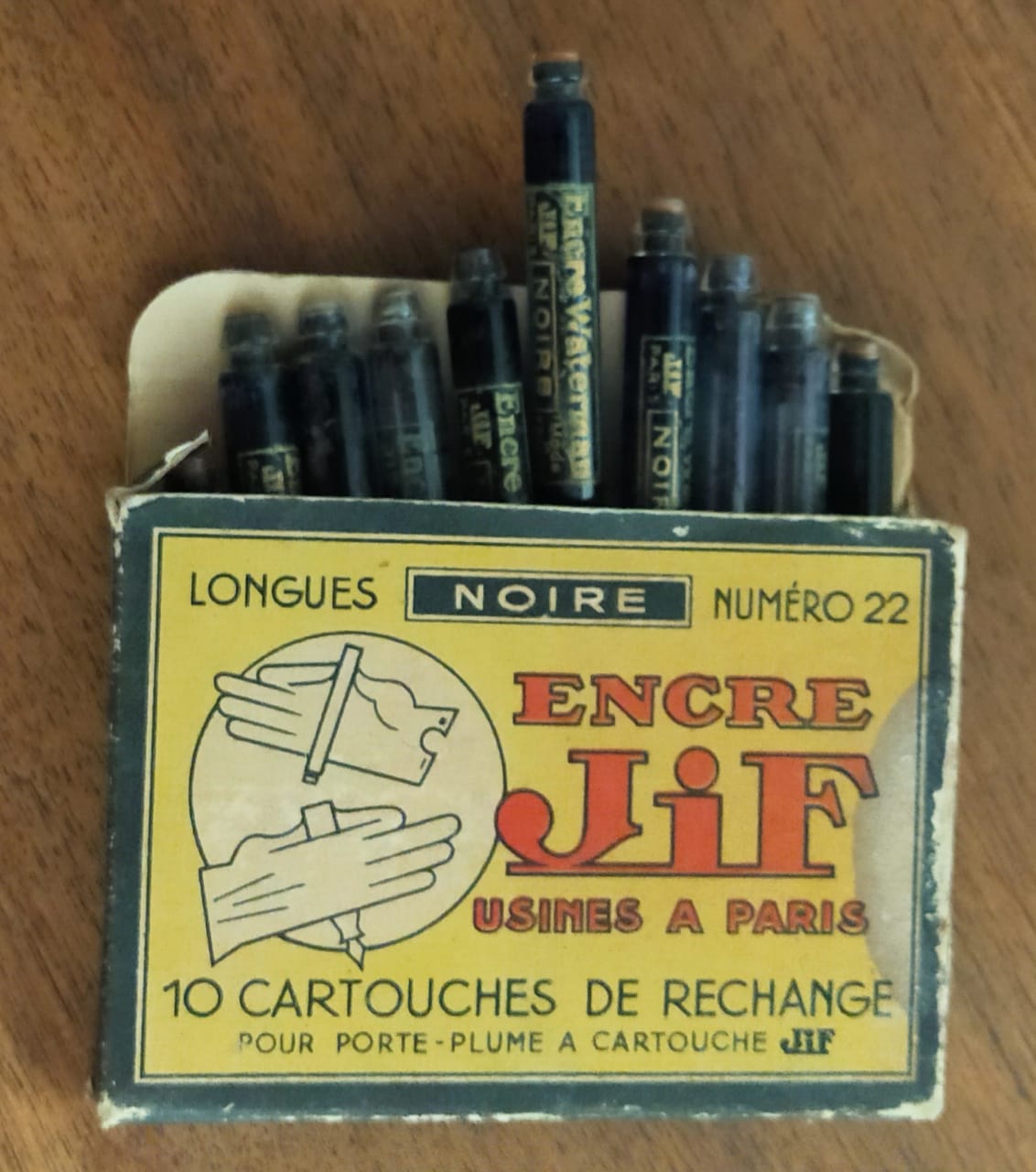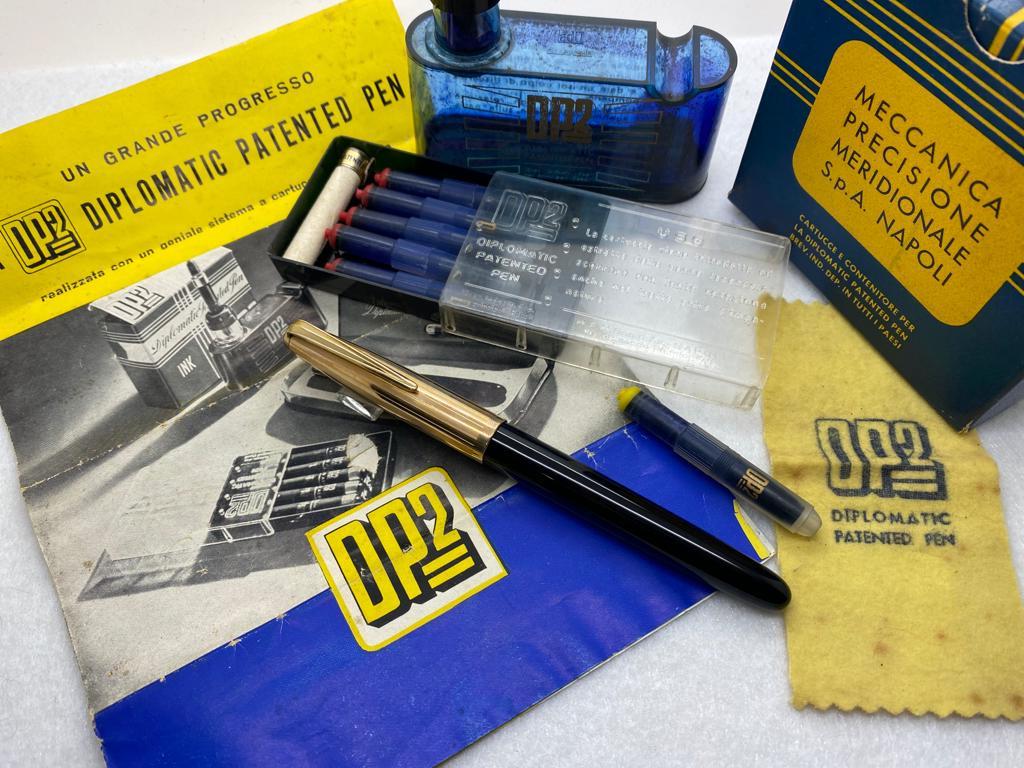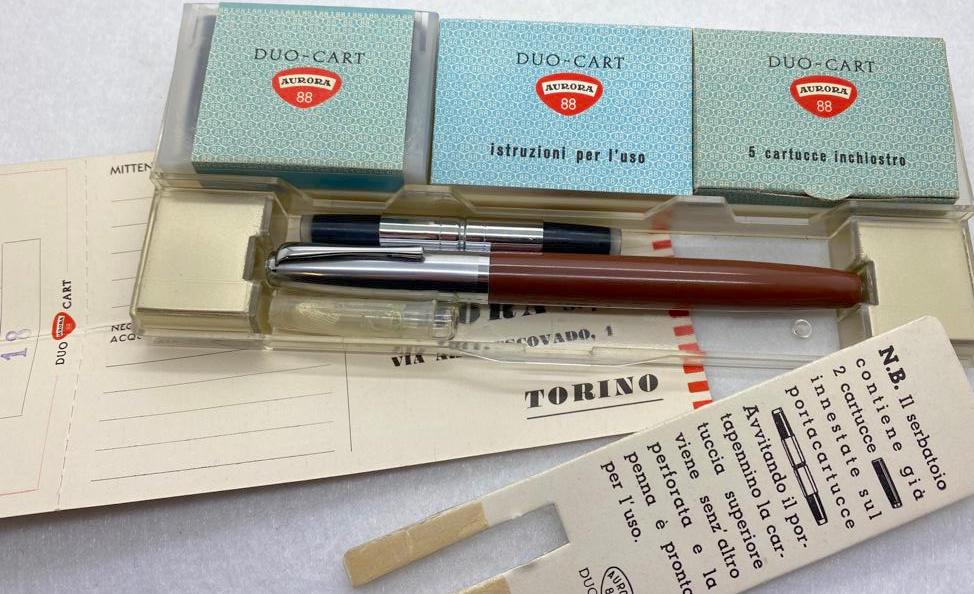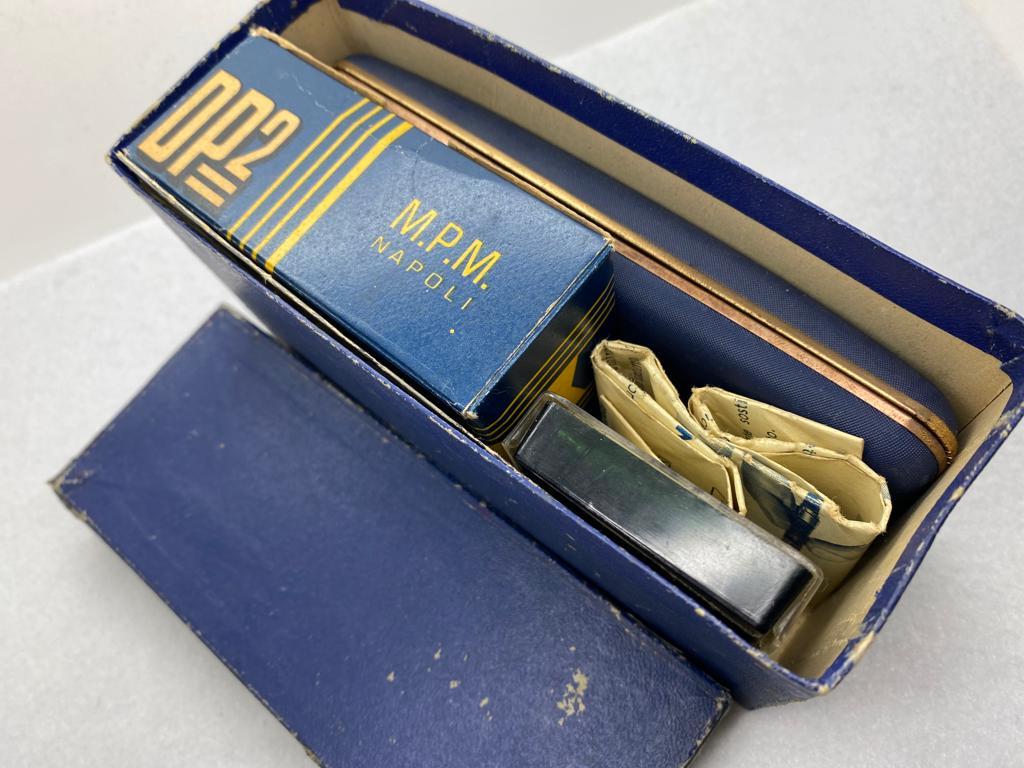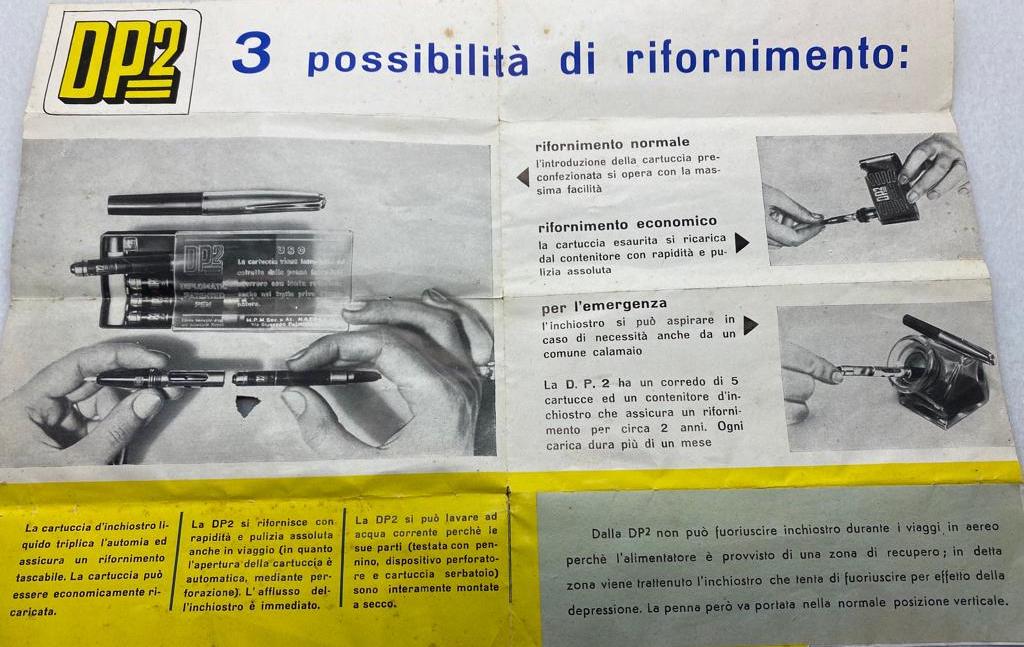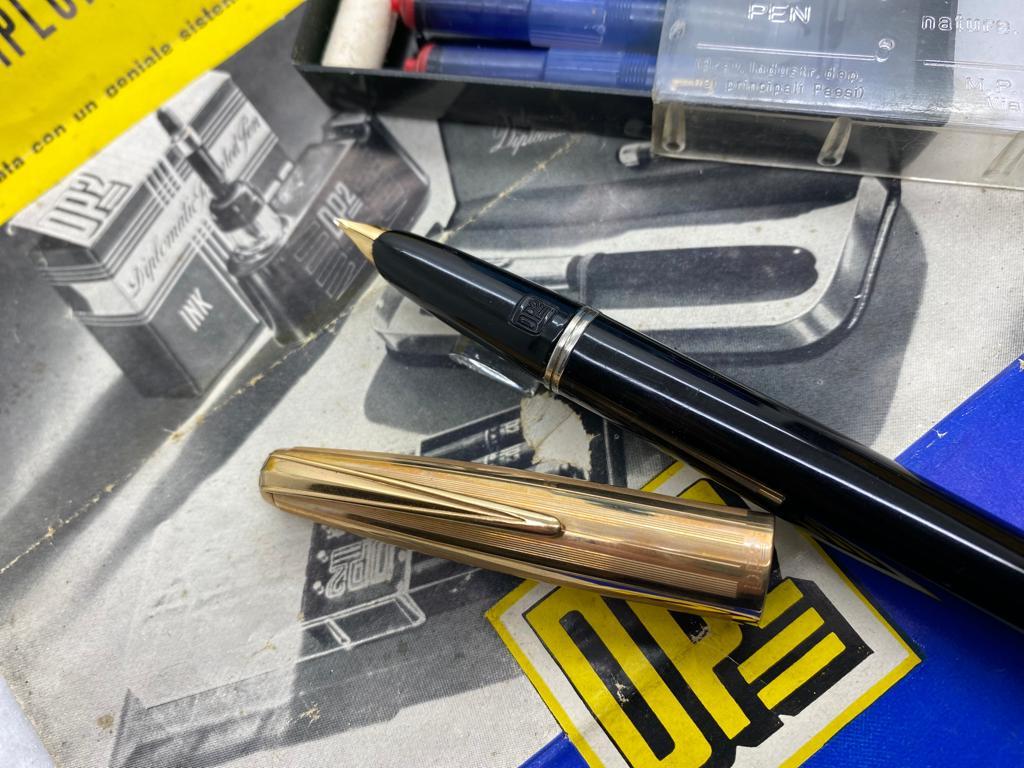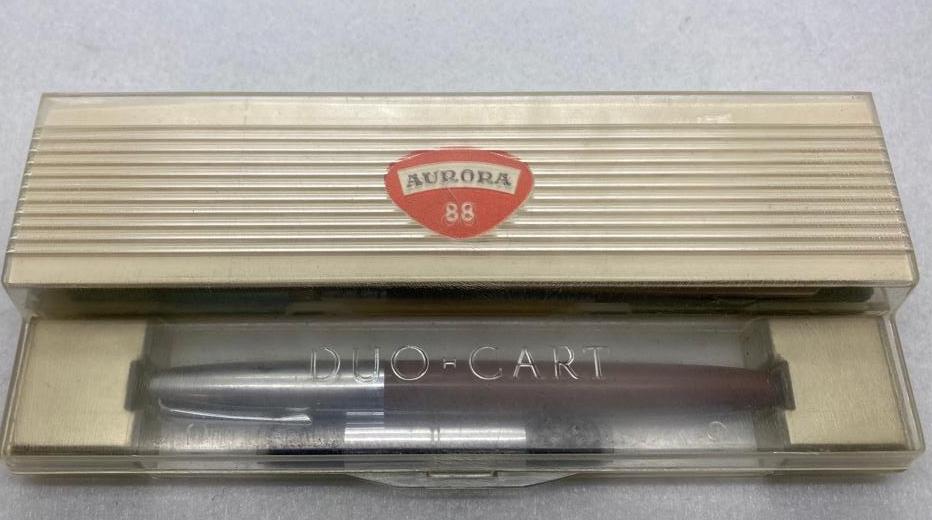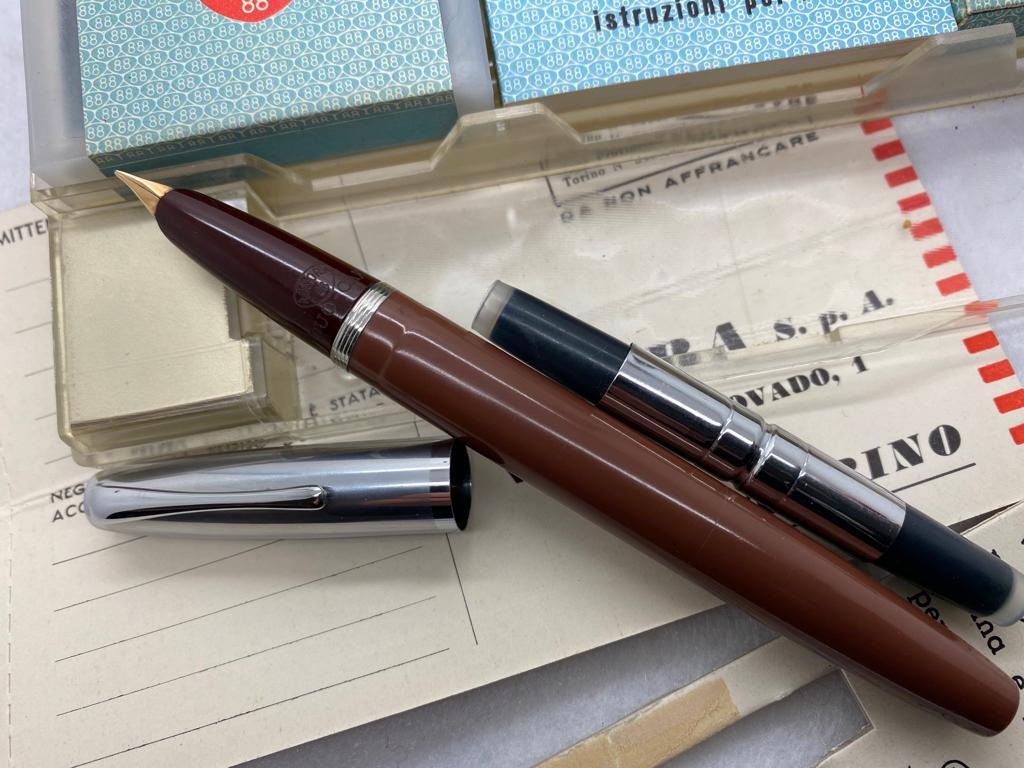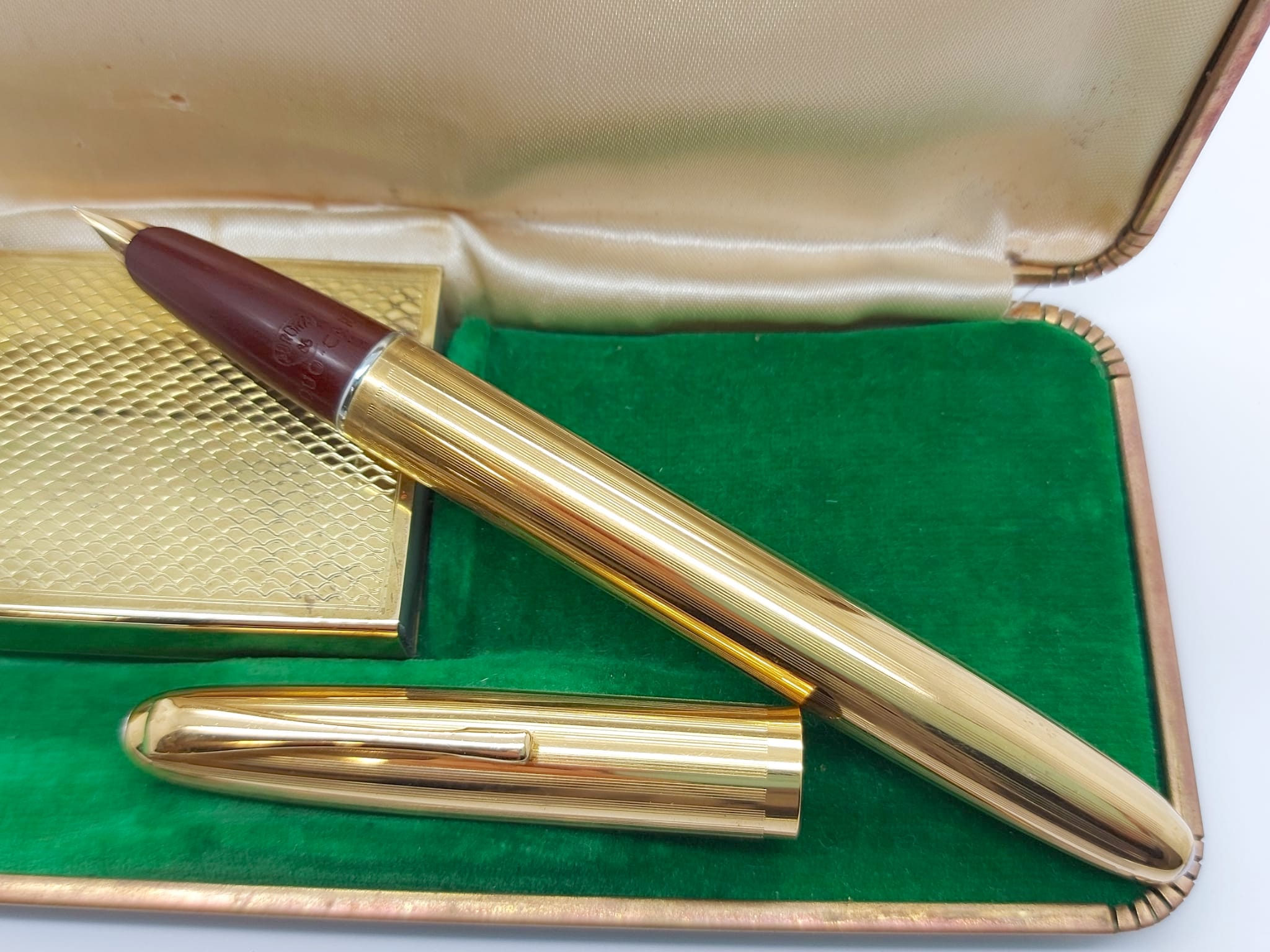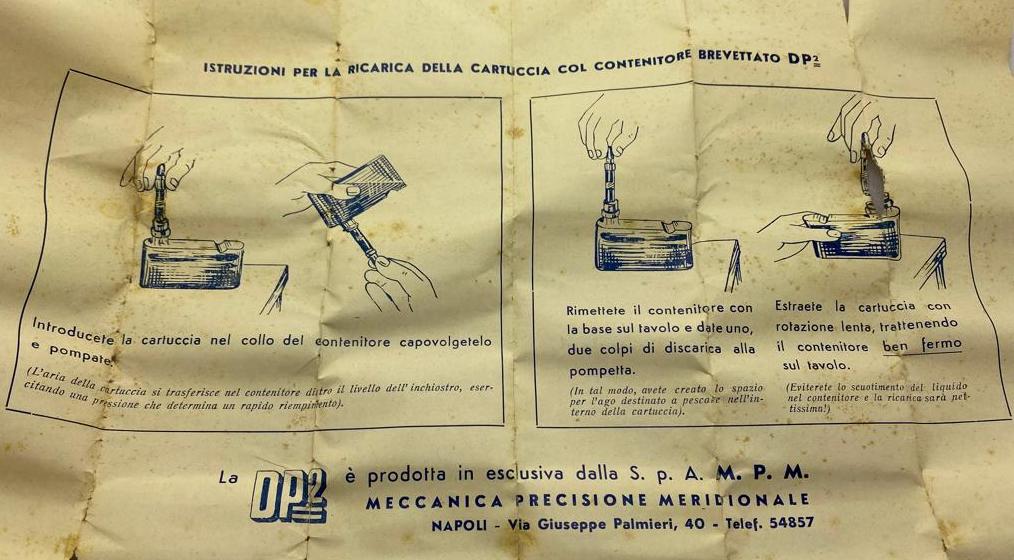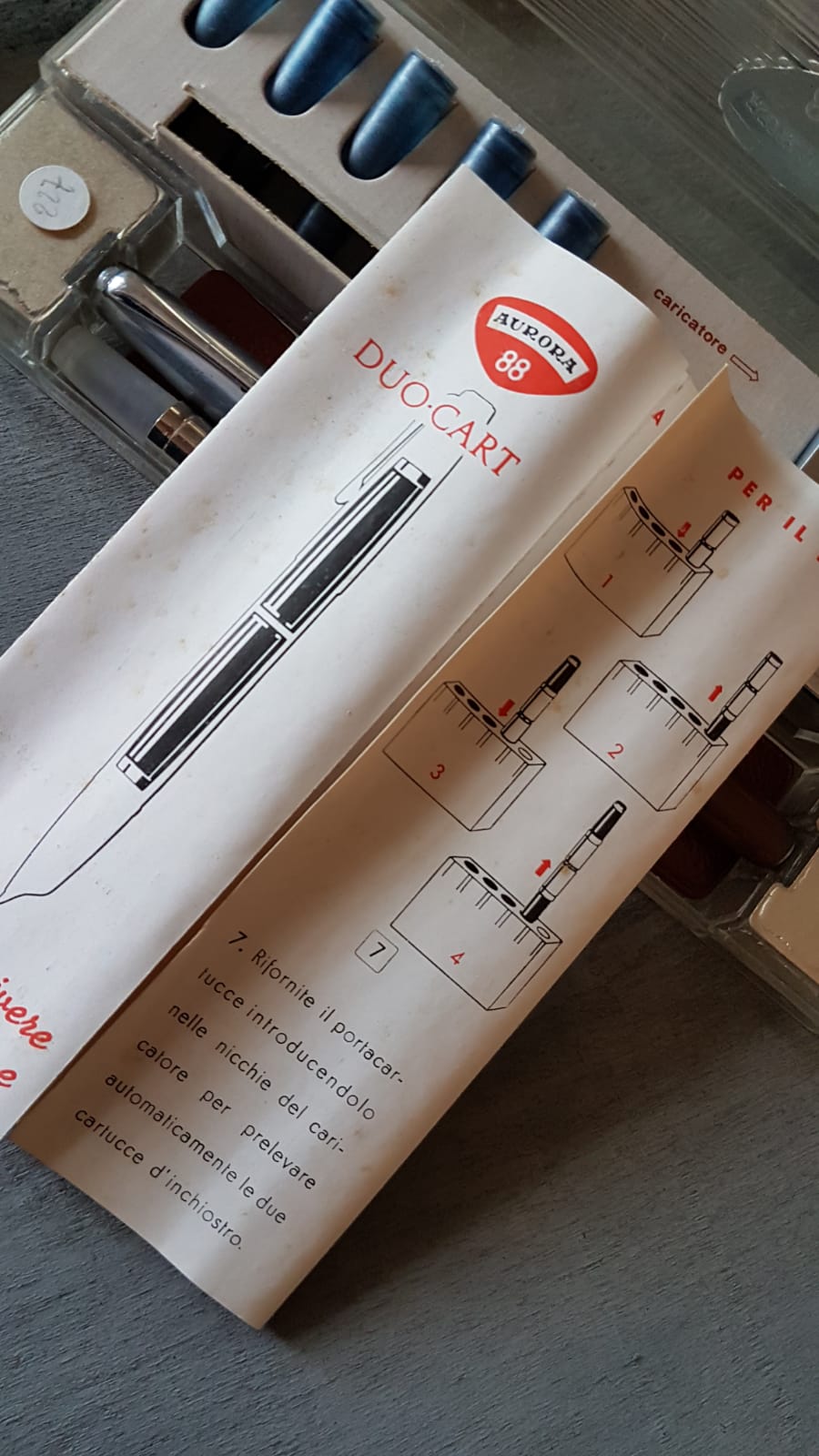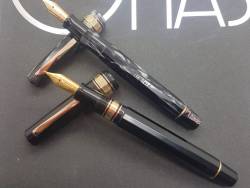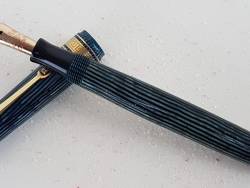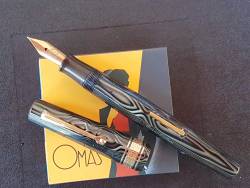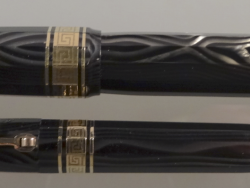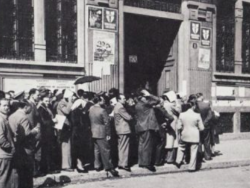The cartridge - Why is it despised?
Fountain pen collectors and users prefer smearing their fingers and struggling with ink bottles instead of adopting pens with a cartridge filling mechanism.
Most fountain pen lovers disregard cartridge fillers and tend to avoid fountain pens with this filling device. The may put up with a converter, but most of the time the cartridge itself is considered as a cheap system, suitable for commercial and student pens.
Easy to understand.
The principle of the cartridge, easy and fast to use, seems to clash against the modern approach to fountain pens which is a re-discovery of the value of time and precious handwriting.
There are historical and technical reasons which seem to justify the negative approach ostracizing the cartridge to the realm of uninteresting, low-value writing instruments.
First of all, the development and success of cartridge fillers, coincided with the sad years of fountain pen decline, due to the overwhelming success of ballpoint pens.
In the early 1950’s, the market was already experiencing the success of the ball point, with its new slender design and its easiness of use, which definitely set the act of writing free from liquid ink.
Fountain pen makers who adopted the cartridge had to review the style of their products, making their pens slimmer and simpler, to be as similar as possible to ballpoints. This phenomenon transformed the fountain pens of these years mostly in dull, charmless writing instruments. Most pen makers adopted resin, injection moulding and later on metal for their fountain pens. Trying to make them as modern as possible, they lost touch with the style of the past, thus paving the way for the current disregard.
Technically speaking, the main difference between a cartridge filler and a piston/lever/button filler is the feeder. Traditional feeders have two channels, to allow ink to flow to the tip of the nib and air into the barrel. This delicate balance of air/ink exchange represents the essential magic which makes a traditional fountain pen write.
Cartridge fillers have simplified feeders, with only one channel, to lead the ink to the tip of the nib. There is no need of air inside a cartridge. Most feeders are in plastic and not in ebonite and they are provided with a specific pin to break the nozzle of the cartridge and initiate the ink flow.
The same principle applies to converters, which however offer the possibility to be filled drawing ink from a bottle.
In terms of quality of writing, most fountain pen lovers would say that the flow of a cartridge filler is not as satisfying as the flow of a piston filler but this is only partially true and again, biased by the old time prejudices.
The flow may be less rich and the line on paper may result slightly drier but, actually, it is a minimal difference which is sometimes hardly noticeable.
All this said, we must however acknowledge that the cartridge deserves a place of honor in the history of fountain pens. It is an important chapter of the strenuous research to set the fountain pen free from the constant bond to the bottle of ink.
As early as 1890 the Eagle Pencil Company marketed a metal fountain pen with a glass cartridge. It was not a functional pen, as the cartridge was fragile and had to be sealed with wax or cork but this was undoubtedly the first step towards independence from the ink bottle.
It took a few more decades and a few more unsuccessful experiments, to finally get to the first functional cartridge pen which was designed by M. Perraud for the French Waterman subsidiary. His invention finally led to the marketing of the JIF model in 1936, which could be used with functional glass cartridges.
Waterman was the first company to market packages of glass cartridges which could be bought to be used with the innovative JIF pen.
In the 1950s the race for cartridge fillers became more and more evident, competing with the unstoppable success of the ballpoint pen (A.T. Cross entered the market of ball pens in 1953 and the Parker Jotter was introduced in 1954).
Paradoxically enough, the first cartridge filler was Italian, and it was manufactured by a small Neapolitan company called Meccanica di Precisione Meridionale (MPM) founded by Ing. Del Piero. It was called DP2 (Diplomatic Patented Pen).
The refillable DP2 cartridge was patented in 1951, and definitely marketed in 1953, the same year as the famous Waterman CF (Cartridge Filler) model.
A small Italian semi industrial company had anticipated one of the biggest companies in the world, patenting what actually was a refillable cartridge, more similar to a converter than to a standard single use cartridge.
In 1954, Aurora introduced the Duocart, designed by Abe Steiner, which was provided with polythilene cartridges which could be housed in pairs inside the barrel of the pen.
Ever since, all pen companies introduced cartridge fillers in their line of products along with ball pens. Cartridge models were mainly aimed at the low-cost share the market, thus paving the way to the perception of cartridge fillers being cheap and without value.
Nowadays cartridge/converter fillers are produced worldwide, both as mass products and as quality writing instruments with beautiful design; nonetheless this filling system somewhat spreads its original fame of low quality/ not-so-pleasant-to-use on the pens which adopt it.
Personally, I have nothing against current cartridge/converters. They are generally reliable writers and very comfortable to use, especially when travelling. In my opinion, the only real drawback is the use of plastic cartridges which deprive the fountain pen of one of its most fascinating aspects such as being environmentally friendly. Therefore, I very much prefer to stick to converters which can be filled as many times as possible.
The Duocart in detail
The design of this model, whose father is Abe Steiner, is a derivation of the Aurora 88.
The Duocart has a larger girth than the 88 as it must accommodate two cartridges inside the barrel. The shorter cap gives the pen a sturdy look, suitable for a pen which was aimed at the student market.
The model was marketed in a special plastic presentation box which contained the pen, a set of cartridges, instructions and a cartridge dispenser.
Two different versions of the presentation box are known.
A richer version with gold filled barrel existed, too. The cartridge dispenser could have a gold filled case to make it more elegant and precious.
Bibliography
Pierre Haury - La Seduzione delle Stilo
Enrico Castruccio- La Penna Stilografica
Letizia Jacopini - La storia della stilografica in Italia Vol. I
Online forums:
www.fountainpen.it
www.fountainpennetwork.com
Credits:
Edoardo Marino
Personal archive and collection

